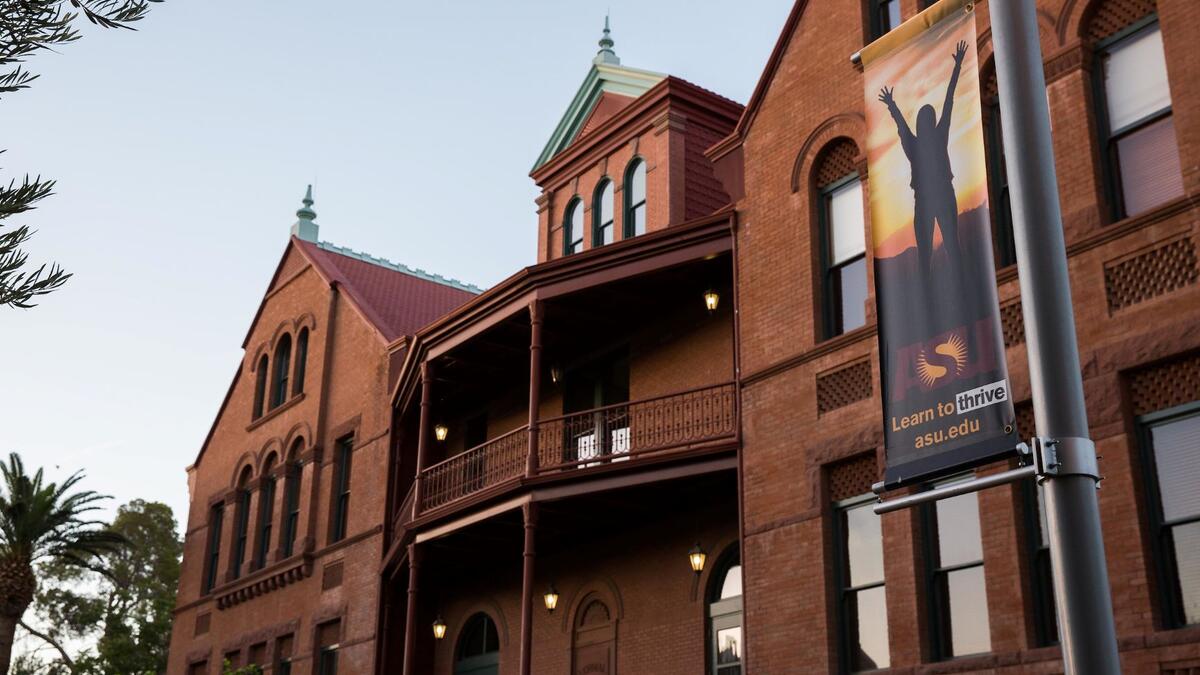Arizona State University’s graduate schools continue to hold high positions in the latest U.S. News and World Report annual rankings.
The 2021 analysis includes rankings on fine arts and health schools, which were last published in 2016.
The Herberger Institute for Design and the Arts, which offers more than 70 graduate degrees, came in at No. 15 out of 226 in overall fine arts education — moving up five spots over its 2016 rank and tying with Michigan’s Cranbrook Academy of Art and New York’s Parsons School of Design, ahead of Rutgers, the University of Texas, Austin and Temple University. The institute’s ceramics program ranked fourth and its photography program ranked sixth.
“Graduate programs in ASU’s School of Art continue to be globally recognized,” said Steven J. Tepper, dean of ASU’s Herberger Institute for Design and the Arts. “Our faculty and students are working at the highest levels of creativity here in the desert, and Grant Street Studios in downtown Phoenix is, hands down, the best studio and exhibition space for MFA candidates in the country. Importantly, we are preparing artists who are socially engaged, technologically empowered, and have the mindset and opportunity to collaborate across disciplines.”
Read more: ASU Law achieves highest-ever ranking | 30 W. P. Carey disciplines rank in the top 25 | Mary Lou Fulton Teachers College ranked among nation's best | School of Public Affairs secures 6 top 10 spots
The College of Health Solutions, which offers 25 graduate degrees, moved up in best speech pathology programs, ranking 16th out of 260 and tying with Ohio State University, ahead of Florida State University and the University of Colorado, Boulder. The AuD in audiology program ranked 18th.
“These programs are central to our mission of optimizing health for people and communities,” said Deborah Helitzer, dean of the College of Health Solutions. “We are pleased to again be recognized among the nation’s top 20 programs in audiology and speech-language pathology and remain dedicated to providing value to our students and the organizations that hire them. These programs prepare students for careers that make a real difference in the quality of life.”
The Mary Lou Fulton Teachers College, offering 15 graduate degrees, moved up three spots to come in at No. 13 out of 255 in overall education, besting Johns Hopkins and the University of Virginia. The normal school edged up in secondary education to 14th from 16th, and in special education from 18th to 17th.
The Ira A. Fulton Schools of Engineering moved up in overall engineering to No. 41, tying with the University of Virginia and besting Brown University. Its aerospace program rose five spots to No. 22 from No. 27. Chemical engineering jumped three spots to 47th. Computer and electrical engineering both rose four spots, to 30th and 27th respectively. Materials science rose five spots to 36th. Mechanical engineering rose three spots, coming in at No. 40.
The Sandra Day O'Connor College of Law moved up in full time law from No. 27 to No. 24, besting Fordham University and Boston College. The college’s trial advocacy program leaped 66 spots, from 144th to 78th. Environmental law nudged up to 20th. Tax law rose six spots to No. 37. Intellectual property and international law both rose two spots.
The W. P. Carey School of Business ranked 35th in the nation, beating the University of Arizona at 46th. The accounting program rose 11 spots to 20th. Finance rose eight spots to 31st. Management edged up three spots to No. 13. Entrepeneurship climbed seven spots to arrive at the 17th place. Marketing rose to 18th and production shot up eight spots to No.12.
The Watts College of Public Service and Community Solutions had category gains in environmental policy, public finance and public policy analysis. Overall Watts ranked 19th overall, besting Columbia, Duke and Georgetown. Its information technology management program was No. 2 in the nation.
The widely touted set of annual rankings was released Tuesday by the news magazine, which compared hundreds of graduate programs on a variety of metrics.
The magazine evaluated the graduate programs on measures including surveys of deans and hiring recruiters; student selectivity; faculty resources, including the ratio of full-time doctoral students to faculty, for education programs; research activity, including expenditures; overall rank and specialty rankings.
Top photo by Deanna Dent
More Law, journalism and politics

ASU Law to offer its JD part time and online, addressing critical legal shortages and public service
The Sandra Day O’Connor College of Law at Arizona State University, ranked 15th among the nation’s top public law schools, announced today a new part-time and fully online option for its juris doctor…

ASU launches nonpartisan Institute of Politics to inspire future public service leaders
Former Republican presidential nominee and Arizona native Barry Goldwater once wrote, "We have forgotten that a society progresses only to the extent that it produces leaders that are capable of…

Annual John P. Frank Memorial Lecture enters its 26th year
Dahlia Lithwick, an MSNBC analyst and senior legal correspondent at Slate, is the featured speaker at the School of Social Transformation’s 26th annual John P. Frank Memorial Lecture on…


